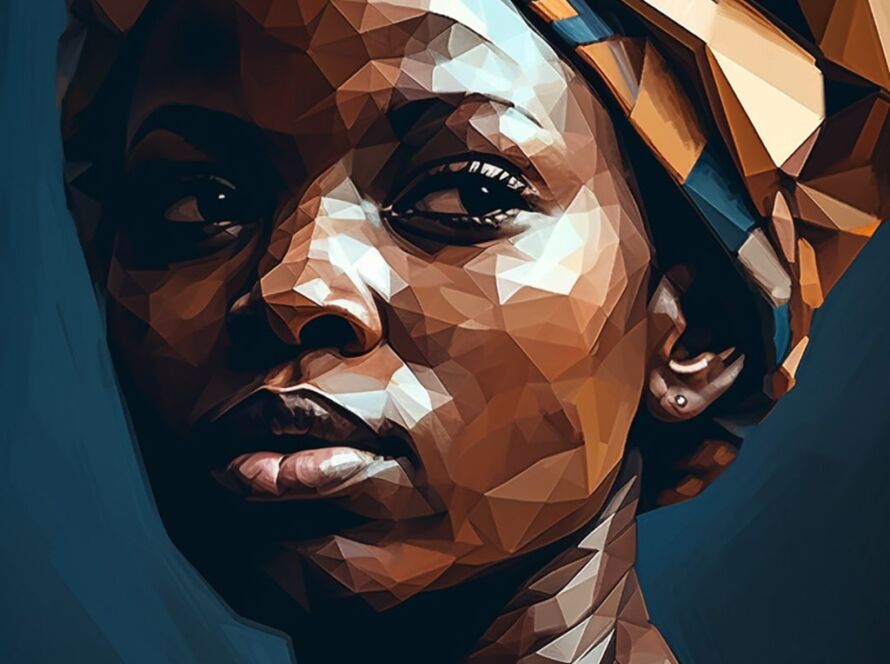Artificial Intelligence (AI) is revolutionizing the art world, offering new tools and methods for artists to explore and create. Here’s an in-depth look at how AI is transforming artistic creation:
1. Generative Art
Concept: Generative art involves algorithms that can create art autonomously, with minimal human intervention.
How It Works:
- Algorithmic Composition: Artists design algorithms that produce visual patterns, shapes, or entire artworks based on certain parameters.
- Machine Learning Models: AI models like GANs (Generative Adversarial Networks) generate new images by learning from a dataset of existing artworks.
Examples:
- DeepDream: A program developed by Google that uses neural networks to create dream-like, surreal images by enhancing patterns in existing images.
- Artbreeder: An online platform where users can create and modify images using AI, blending features from different pictures to generate new artwork.
Impact:
- Enables the creation of complex, unique pieces that might be difficult for humans to conceive manually.
- Opens new avenues for creativity, allowing artists to explore novel aesthetics and styles.
2. Augmented Creativity
Concept: AI serves as a creative assistant, augmenting the artist’s abilities and providing new tools for expression.
How It Works:
- Style Transfer: AI can transfer the style of one artwork onto another, allowing artists to experiment with different artistic techniques.
- Assistance in Sketching and Painting: AI tools can help artists by suggesting compositions, correcting perspectives, or even completing unfinished sketches.
Examples:
- Prisma: An app that uses AI to transform photos into artworks in the style of famous artists like Van Gogh or Picasso.
- DALL-E: An AI developed by OpenAI that can generate images from textual descriptions, enabling artists to visualize concepts quickly.
Impact:
- Enhances the creative process by offering new ways to visualize and realize artistic ideas.
- Reduces the time and effort needed to experiment with different styles and techniques.
3. Interactive and Immersive Art
Concept: AI enables the creation of interactive and immersive art experiences that engage audiences in new ways.
How It Works:
- Real-Time Interaction: AI systems can respond to viewer input, creating dynamic and personalized art experiences.
- Virtual and Augmented Reality: AI enhances VR and AR applications, allowing for more interactive and immersive installations.
Examples:
- AI-Generated Music and Dance: Systems like Google’s Magenta can compose music or choreograph dance routines, which can be part of interactive installations.
- Virtual Art Installations: Artists use AI to create virtual environments that respond to user movements and actions.
Impact:
- Provides audiences with unique, engaging experiences that traditional static art cannot offer.
- Allows artists to explore new forms of storytelling and audience engagement.
4. Restoration and Preservation
Concept: AI assists in the restoration and preservation of artworks, ensuring their longevity for future generations.
How It Works:
- Digital Restoration: AI algorithms can reconstruct damaged or faded artworks, filling in missing details and enhancing colors.
- Archival and Preservation: AI helps catalog and analyze vast collections of artworks, identifying patterns and connections that aid in preservation efforts.
Examples:
- Colorization of Black-and-White Photos: AI tools can add color to historical black-and-white photographs and film, bringing them to life.
- Restoration of Classical Paintings: AI systems analyze old paintings and suggest restoration techniques, often surpassing human capabilities in precision.
Impact:
- Helps preserve cultural heritage by restoring and maintaining artworks.
- Enables better understanding and appreciation of historical art through enhanced visualization.
5. Democratization of Art Creation
Concept: AI makes art creation more accessible to a wider audience, allowing non-artists to create and enjoy art.
How It Works:
- User-Friendly Tools: AI-powered tools and applications simplify the art creation process, making it accessible to people without formal training.
- Collaborative Platforms: Online platforms use AI to facilitate collaboration between artists and non-artists, encouraging community-based art projects.
Examples:
- Canva: A graphic design tool that uses AI to help users create professional-quality designs with ease.
- DeepArt: An app that allows users to create artworks by applying AI-driven filters to their photos.
Impact:
- Encourages more people to engage with and create art, fostering a broader appreciation for artistic expression.
- Reduces barriers to entry, enabling a more diverse range of voices and perspectives in the art world.
Conclusion
AI is profoundly changing the way we create art, offering new tools, methods, and possibilities for artistic expression. From generative art and augmented creativity to interactive experiences and democratization of art creation, AI is expanding the boundaries of what is possible in the art world. As AI continues to evolve, it will undoubtedly inspire even more innovative and transformative approaches to art, enriching our cultural landscape in the process.


